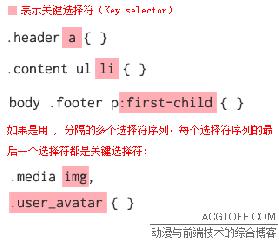Spring Boot构建系统安全层的步骤
Spring Security 中采用的是管道-过滤器(Pipe-Filter)架构模式,这些过滤器链,构成了 Spring Security 的核心。如下图所示:

项目一旦启动,过滤器链将会实现自动配置,如下图所示:

UsernamePasswordAuthenticationFilter 用来检查输入的用户名和密码,代码如下:
public class UsernamePasswordAuthenticationFilter extends AbstractAuthenticationProcessingFilter { public Authentication attemptAuthentication(HttpServletRequest request,HttpServletResponse response) throws AuthenticationException {if (postOnly && !request.getMethod().equals('POST')) { throw new AuthenticationServiceException('Authentication method not supported: ' + request.getMethod());} String username = obtainUsername(request);String password = obtainPassword(request); if (username == null) { username = '';} if (password == null) { password = '';} username = username.trim(); UsernamePasswordAuthenticationToken authRequest = new UsernamePasswordAuthenticationToken(username, password);// Allow subclasses to set the 'details' propertysetDetails(request, authRequest);return this.getAuthenticationManager().authenticate(authRequest); } …}
BasicAuthenticationFilter 用来认证用户的身份。
FilterSecurityInterceptor 用来判定该请求是否能够访问目标 HTTP 端点。
Spring Security 中的核心类
SecurityContextHolder 存储了应用的安全上下文对象 SecurityContext,包含系统请求中最近使用的认证信息。
一个 HTTP 请求到达系统后,将通过一系列的 Filter 完成用户认证,然后具体的工作交由 AuthenticationManager 完成,AuthenticationManager 成功验证后会返回填充好的 Authentication 实例。
AuthenticationManager 是一个接口,其实现类 ProviderManager 会进一步依赖 AuthenticationProvider 接口完成具体的认证工作。
在 Spring Security 中存在一大批 AuthenticationProvider 接口的实现类,分别完成各种认证操作。在执行具体的认证工作时,Spring Security 势必会使用用户详细信息,UserDetailsService 服务就是用来对用户详细信息实现管理。
02 | 基于 Spring Security 构建用户认证体系在 Spring Boot 中整合 Spring Security 框架首先需要引入依赖:
<dependency> <groupId>org.springframework.boot</groupId> <artifactId>spring-boot-starter-security</artifactId></dependency>
只要我们在代码工程中添加了上述依赖,包含在该工程中的所有 HTTP 端点都将被保护起来。
在引入 spring-boot-starter-security 依赖之后,Spring Security 会默认创建一个用户名为“user”的账号。当我们访问 AccountController 的 “accounts/{accountId}” 端点时,弹出如下界面:

同时,控制台日志打印如下:
Using generated security password: 17bbf7c4-456a-48f5-a12e-a680066c8f80
因此,访问该接口需要设置如下信息:

每次启动应用时,通过 Spring Security 自动生成的密码都会有所变化。如果我们想设置登录账号和密码,可以在 application.yml 中配置如下:
spring: security: user: name: springcss password: springcss_password配置 Spring Security
初始化用户信息所依赖的配置类是 WebSecurityConfigurer 接口,在日常开发中,我们往往是使用 WebSecurityConfigurerAdapter 类并覆写其中的 configure(AuthenticationManagerBuilder auth) 的方法完成配置工作。
使用 AuthenticationManagerBuilder 类创建一个 AuthenticationManager 就能够轻松实现基于内存、LADP 和 JDBC 的验证。初始化所使用的用户信息只需要指定用户名(Username)、密码(Password)和角色(Role)这三项数据即可。
使用基于内存的用户信息存储方案
@Overrideprotected void configure(AuthenticationManagerBuilder builder) throws Exception { builder.inMemoryAuthentication().withUser('springcss_user').password('password1')// 或者使用.authorities('ROLE_USER').roles('USER').and().withUser('springcss_admin').password('password2').roles('USER', 'ADMIN');}
使用基于数据库的用户信息存储方案
表结构如下:
create table users( username varchar_ignorecase(50) not null primary key, password varchar_ignorecase(500) not null, enabled boolean not null); create table authorities ( username varchar_ignorecase(50) not null, authority varchar_ignorecase(50) not null, constraint fk_authorities_users foreign key(username) references users(username)); create unique index ix_auth_username on authorities (username,authority);
Spring Security 的配置代码如下:
@AutowiredDataSource dataSource; @Overrideprotected void configure(AuthenticationManagerBuilder auth) throws Exception { auth.jdbcAuthentication().dataSource(dataSource).usersByUsernameQuery('select username, password, enabled from Users where username=?').authoritiesByUsernameQuery('select username, authority from UserAuthorities where username=?').passwordEncoder(new BCryptPasswordEncoder());}实现定制化用户认证方案
扩展 UserDetails
public class SpringCssUser implements UserDetails { private static final long serialVersionUID = 1L; private Long id; private final String username; private final String password; private final String phoneNumber; // 省略getter/setter // 省略重写方法}
扩展 UserDetailsService
@Servicepublic class SpringCssUserDetailsService implements UserDetailsService { @Autowired private SpringCssUserRepository repository; @Override public UserDetails loadUserByUsername(String username) throws UsernameNotFoundException {SpringCssUser user = repository.findByUsername(username);if (user != null) { return user;}throw new UsernameNotFoundException('SpringCSS User ’' + username + '’ not found'); }}
整合定制化配置
@Configurationpublic class SpringCssSecurityConfig extends WebSecurityConfigurerAdapter { @Autowired SpringCssUserDetailsService springCssUserDetailsService; @Override protected void configure(AuthenticationManagerBuilder auth) throws Exception {auth.userDetailsService(springCssUserDetailsService); }}03 | 基于 Spring Security 实现安全访问
在日常开发过程中,我们需要对 Web 应用中的不同 HTTP 端点进行不同粒度的权限控制。
对 HTTP 端点进行访问授权管理使用配置方法
配置方法也是位于 WebSecurityConfigurerAdapter 类中,但使用的是 configure(HttpSecurity http) 方法,如下代码所示:
protected void configure(HttpSecurity http) throws Exception { http.authorizeRequests()// 所有请求都需要认证.anyRequest()// 允许认证用户访问.authenticated().and()// 需要使用表单进行登录.formLogin().and()// 使用 HTTP Basic Authentication 方法完成认证.httpBasic();}
Spring Security 还提供了一个 access() 方法,允许开发人员传入一个表达式进行更细粒度的权限控制,这里,我们将引入Spring 框架提供的一种动态表达式语言—— SpEL(Spring Expression Language 的简称)。
只要 SpEL 表达式的返回值为 true,access() 方法就允许用户访问,如下代码所示:
@Overridepublic void configure(HttpSecurity http) throws Exception { http.authorizeRequests().antMatchers('/orders').access('hasRole(’ROLE_USER’)');}
使用注解Spring Security 提供了 @PreAuthorize 注解也可以实现类似的效果,使用该注解代码如下所示:
@RestController@RequestMapping(value='orders')public class OrderController { @PostMapping(value = '/') @PreAuthorize('hasRole(ROLE_ADMIN)') public void addOrder(@RequestBody Order order) {… }}
@PostAuthorize 主要用于请求结束之后检查权限。
实现多维度访问授权方案使用用户级别保护服务访问该级别是最基本的资源保护级别,只要是认证用户就可能访问服务内的各种资源。
@Configurationpublic class SpringCssSecurityConfig extends WebSecurityConfigurerAdapter { protected void configure(HttpSecurity http) throws Exception {http.authorizeRequests() .anyRequest() .authenticated(); }}
使用用户+角色级别保护服务访问该级别在认证用户级别的基础上,还要求用户属于某一个或多个特定角色。
@Configurationpublic class SpringCssSecurityConfig extends WebSecurityConfigurerAdapter { @Override public void configure(HttpSecurity http) throws Exception { http.authorizeRequests() .antMatchers('/customers/**') .hasRole('ADMIN') .anyRequest() .authenticated(); }}
上述代码表示只有'ADMIN'角色的认证用户才能访问以'/customers/'为根地址的所有 URL。
使用用户+角色+操作级别保护服务访问该级别在认证用户+角色级别的基础上,对某些 HTTP 操作方法做了访问限制。
@Configurationpublic class SpringCssSecurityConfig extends WebSecurityConfigurerAdapter { @Override public void configure(HttpSecurity http) throws Exception{http.authorizeRequests().antMatchers(HttpMethod.DELETE, '/customers/**').hasRole('ADMIN').anyRequest().authenticated(); }}
上述代码的效果在于对“/customers”端点执行删除操作时,我们需要使用具有“ADMIN”角色的“springcss_admin”用户,否则会出现“access_denied”错误信息。
以上就是Spring Boot构建系统安全层的步骤的详细内容,更多关于Spring Boot构建系统安全层的资料请关注好吧啦网其它相关文章!
相关文章:

 网公网安备
网公网安备